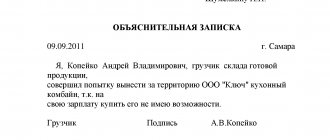In order to act as a full-fledged owner of real estate, to make sole decisions regarding its “fate”, it is necessary to formalize your rights in law. Privatization of a garage in 2021 is a simple and common procedure for transferring a building from public law to private law. By using a simple guide on how to quickly and safely go through all the steps, you will eliminate the risk that the authorities will need the land on which the structure is located, and they will take it away from you for minimal compensation.
A garage that is not registered as a property is not listed in the Unified State Register as property owned by a private individual and does not have a unique cadastral number. Until the privatization procedure is completed, the private owner will not be able to sell, exchange or otherwise dispose of real estate.
About the procedure
Garage privatization is a procedure during which a structure for a car, owned by an organization or the state, becomes the property of a citizen , the owner of the vehicle. This procedure is not easy and takes a lot of time. Everyone has the right to privatize a garage, regardless of the location of the facility or the person’s place of residence.
The algorithm for performing the procedure is presented in the following stages:
- Collection of documents.
- Drawing up a purchase and sale agreement.
- Registration of ownership rights with the justice authorities.
Privatization of a garage building allows its owner to dispose of real estate and make various transactions with it (donation, purchase and sale, rent, redevelopment, inheritance).
Possible difficulties during privatization and legislative deadlines
You can transfer a garage and other construction projects for economic purposes to private ownership free of charge. The owner's costs are limited to the payment of fees and costs associated with collecting documents.
The law has been extended for the fourth time. Despite the absence of fees for changing ownership, citizens do not rush to government agencies with documents. According to statistics, 20% of outbuildings still do not have a cadastral number.
The main difficulties in the question of how to privatize your garage arise at the stage of collecting documents. Some of the required papers may not be in the hands of the citizen, and obtaining them is a difficult and lengthy process. Particularly difficult is the registration of buildings erected in the “wild 90s”, when property rights did not have clear legislative regulation.
Depending on the nature of the construction, garages are divided into two types: free-standing and connected into a single structure by common walls. In the first case, the owner has the right to independently implement the procedure for changing ownership; in the second, good will and desire to act on the part of all members of the cooperative are required.
Factors that determine cost
Privatizing a garage can cost varying amounts of money. To understand how much this procedure will cost, you need to know what factors influence the price. The following is taken into account in the final privatization price:
- The region where the property is located.
- Date of acquisition of ownership.
- Characteristics of the building.
- Performer type.
- Complexity of the procedure.
- The need to complete a number of missing documents.
- The need to purchase land.
Options for relinquishing property
The owner cannot simply refuse unfoundedly. He needs to document his decision. Not only to formalize it, but also to register it later in Rosreestr. Therefore, there is a procedure for implementing the refusal.
| Privatized property | Inheritance |
| First of all, state-issued municipal housing is privatized. This is how it acquires a single (or several) owner. If a citizen changes his mind about becoming an owner, he deprivatizes the specified housing. Conditions: Possible if the remaining participants who privatized this housing with him express general agreement. The apartment transferred according to the refusal is the only place where citizens permanently live. The residential premises have a free legal status (not mortgaged, not rented). Then the administration accepts the refusal expressed by the owners and re-registers them as tenants following the social tenancy agreement. Important: the reasons for refusal, in principle, do not play a special legal role. As a rule, they are quite significant: Reluctance to continue to maintain common property (as you know, owners pay for major repairs of the house), tax obligations. The desire to participate in a special government program where people are relocated from dilapidated or dilapidated buildings. Several owners are in complex, unregulated relationships | When a citizen dies, his material and financial wealth (real estate, savings, debts) are transferred to his heirs. There is a will - lawyers print it out and follow the wishes of the deceased described there. There is no will - the circle of closest relatives for the deceased is determined (this is the current spouse, children, parents). They are automatically recognized as direct heirs. In principle, heirs have the right to accept or refuse their inheritance of property. The entire procedure takes place with the direct participation of a notary dealing with the affairs of the deceased. The refusal of one heir occurs in favor of the others. If a minor refuses, the procedure is carried out by the guardian with notification and consent of the guardianship. The refusal must be made in writing and certified by a notary. Important: if the refused citizen subsequently changes his mind, it cannot be canceled or annulled. The only exception is in court proceedings, if they prove that it was originally signed by an incapacitated or deceived person |
Approximate prices
Privatization of a garage in a cooperative is subject to current regulations . If the change of ownership of a property is carried out independently, then you will need to pay taxes and state fees.
If you seek help from a qualified specialist, you will need to pay more money. But then you won’t have to deal with privatization yourself, spending a lot of time and effort: a company employee will do it. The average price for privatizing a garage is 8,000 rubles . This price includes all documentary costs. In well-known companies, the price can reach up to 15,000 rubles . In specialized private firms you will have to pay even for a consultation. For example, clarification of questions regarding the privatization of a garage and the plot of land on which it is located will cost about 3,500 rubles .
After privatization, you will have to pay annually the following types of taxes:
- Per vehicle.
- For the plot of land on which the garage building is located.
- For a property.
The cost of purchasing land for a garage may vary: it is indicated in cadastral documents. If the property was acquired before 2001, then it can be privatized free of charge under the dacha amnesty.
RBC: How to register a garage under an amnesty. Instructions
Rosreestr explained which parking spaces fall under the “garage amnesty” and how to become their full owner
From September 1, 2021, a law will come into force that will make it possible to register ownership of a garage in the Unified State Register of Real Estate (USRN). The document provides for the possibility of registering not only the garage itself, but also the free provision of land under it.
Together with Rosreestr, we tell you how to take advantage of the new law and what specific cases it applies to.
Why is the law needed?
The new law is called a “garage amnesty.” It is designed to regulate the market for private garages and the activities of garage cooperatives, to allow citizens to register ownership of garages, as well as the land under them, in a simplified manner. A large number of garage-building cooperatives were created back in Soviet times or before 2005, that is, before the introduction of modern urban planning regulations. Therefore, their legal status is not specified in the current legislation. Such objects cannot be called unauthorized buildings, but often the title documents for them are lost, so registration (including land plots) is hampered by legal uncertainty, and citizens cannot resist their demolition, register their ownership, sell or inherit them. Step 1: Make sure your garage is compliant with the new law.
You will be able to register a garage as your property if three conditions are simultaneously met:
- the garage is permanent, that is, it has a strong connection to the ground;
- the garage was built before the current Town Planning Code of the Russian Federation came into force (before December 29, 2004);
- the garage is not recognized as an unauthorized construction by a court or decision of a local government body.
If you decide to start registering a garage, first of all contact your local administration and find out how the “garage amnesty” will be implemented in your municipality. Perhaps the local authorities will organize work on all garages and avoid unnecessary procedures, Rosreestr advised.
The following circumstances will not prevent you from registering a garage:
- the garage cooperative of which you were a member no longer exists;
- your garage has common walls with other garages and is located in the same row with them; you have not registered the land under the garage;
- the citizen from whom you purchased the garage has died or you know nothing about him;
- the garage belonged to one of your close relatives, but after his death it was not registered as an inheritance;
- the land under the garage is provided to the cooperative on the right of permanent (indefinite) use or on a lease basis.
Step 2. Gather the necessary documents
Before you start registering a garage, carefully study all the documents that you have that may have at least some relation to your garage. Any certificates, decisions, technical descriptions can become the basis for registration of rights to a garage. You can also contact your local BTI; they may have documents containing a description of your garage. Perhaps this will allow you to avoid the cost of cadastral work to prepare a technical plan for the garage, Rosreestr advises.
You will be able to arrange a garage:
- any decision of an authority (including the Soviet period), which confirms that you were previously provided with a plot of land under a garage;
- a certificate or other document confirming the payment of a share in the garage cooperative;
- a decision of the general meeting of the garage cooperative confirming the allocation of a garage to you;
- old technical passport for the garage that you ordered for technical inventory;
- inheritance documents if the garage belonged to your father, mother, grandfather, grandmother, etc.
“However, if the specified documents are not available, this does not mean that you will not be able to register a garage. The authorities of your region are empowered to determine other documents that are the basis for registering rights to a garage under the “garage amnesty,” Rosreestr explained.
Step 3: Find out the status of the land under the garage
In order to find out whether the land plot under your garage is registered in the cadastral register, you can contact:
- in the MFC;
- to the branch of the Cadastral Chamber in your city;
- to the local municipal government;
- to the cadastral engineer;
- to Rosreestr.
Information about land plots registered in the cadastral register can also be found on the public cadastral map of Rosreestr in the section “Online reference information on real estate”. Step 4: Create a plot
If the land plot under the garage is not registered in the cadastral register, you will have to create one (if it is, go straight to Step 5). Check with your local administration to see if a land surveying project has been approved for the area where your garage is located. This is a document that determines in advance the directions of development of the territory and the boundaries of land plots.
You don't have to do this by immediately starting to prepare a diagram of the boundaries of the area under the garage. However, it must be borne in mind that in accordance with the Land Code, the scheme cannot be prepared where the land surveying project has been approved. You can prepare a diagram yourself or using an approved form, but it is better to contact a cadastral engineer for this service. The scheme can be prepared in paper form or in the form of an electronic document in the form.
After drawing up the layout of the land plot, you need to contact the public authority that manages the land plot under your garage.
If the land plot is in municipal ownership or in state undivided property, then it is a municipality. If the garage is located on land that is regionally owned, then the application must be submitted to the regional government, if to the federal government, then to the Federal Property Management Agency (the corresponding regional territorial administration). It is necessary to submit an application for preliminary approval of the provision of a land plot. You should receive a response within 30 days.
Based on a positive decision, you go to the cadastral engineer and ask him to prepare a boundary plan for the land plot and a technical plan for the garage. When the cadastral engineer has informed you that the documents are ready, you need to contact Rosreestr to register the land plot with the state cadastral register. This can be done at the MFC or submit documents electronically. Based on the results of this procedure, you will receive an extract from the Unified State Register of Real Estate for the land plot under your garage.
Step 5. Send documents to the administration In order to complete the registration of rights to both the land plot and the garage, you must officially send to the administration:
- decision on preliminary approval of the provision of a land plot;
- extract from the Unified State Register of Land Registers for the land plot;
- technical plan for the garage.
The administration, in turn, will have to:
- make a decision to provide ownership of a land plot free of charge;
- submit an application to Rosreestr for registration of ownership of a land plot, about
- state cadastral registration of the garage and registration of ownership of the garage;
- submit extracts from the Unified State Register of Real Estate confirming the registration of rights to the garage and land.
Having received an extract from the Unified State Register of Land Registers for the land plot and garage, you can be sure that you have officially become its owner.
WAYS TO OBTAIN
Receiving paper is available in several ways:
- In the local authority of Rosreestr. In this case, the person writes an application and submits the above documents with it. Information about the object number in the registry is also provided. Transferring the number is not necessary, but this nuance will significantly speed up the registration process. The document is prepared within 5-7 days. The day of receipt is indicated on the client’s application. The latter is issued in 2 versions, one of which remains with the authorized body, and the second is returned to the applicant. The presence of such paper allows the owner to demand from the executive body the timely provision of services and an explanation for the delay. It is worth noting that the application can be submitted to Rosreestr personally or a representative can be engaged for this purpose. If the second option is chosen, the person must have a power of attorney.
- Through the Internet. If the self-visit method is not suitable, you can make it simpler - perform the necessary manipulations through the State Services resource. You must first pass authorization and log into your personal account. Next, the appropriate option is selected through the menu and the necessary information is indicated.
- Through MFC. If there is an MFC branch in the city, you can fill out an application and submit a package of documents for registering the garage with this body. To avoid standing in line, it is worth making an appointment in advance.
- By mail. An alternative solution is to transfer documentation and applications by mail with a list of papers. The disadvantage of this option is that the registration process is delayed for a maximum period due to possible delays.
What will happen if privatization is not carried out?
The owner of a non-privatized garage may face the following problems:
- lack of the right to dispose of real estate at one’s own discretion, including selling, donating, or inheriting;
- obtaining an order for the forced demolition of an illegal building;
- administrative penalty;
- excluding the possibility of seizure of a land plot without paying compensation to the owner of the building.
Attention! If unauthorized construction is legalized, then you will need to prepare evidence that it does not pose a danger to people and the environment and complies with current building codes.
Other nuances
A sample form can be found at the territorial division of Rosreestr. All information is available on information stands. Registration of necessary services through the MFC will save waiting time, but the cost of the work will increase due to possible payment for the form.
A cadastral passport must be issued in compliance with the rules of jurisdiction. The document should be submitted at the location of the garage or cooperative.
The sample document contains the necessary information that is useful for the applicant to know before directly coming to the Rosreestr office. You can carry out the procedure in person. The help of a specialist will be required when there are problems when registering an object for inventory registration.
Problems must be resolved administratively or judicially. Otherwise, the procedure for obtaining information from the state cadastre is simple and will not take the applicant much time. Required forms submitted via mail must be certified by a notary. The result of contacting the registry office will be a document that allows you to identify important technical and other information about the garage.
Drawing up an application
The application is submitted on a form approved by Order No. 743 of the Ministry of Economic Development. The application indicates the cadastral number and address of the garage, as well as the cadastral number of the land plot where the structure is located, and information about the applicant is entered.
The form of submission of the document is noted: electronic or paper, the place where it will be received: Rosreestr branch, post office, MFC or e-mail. An employee of Rosreestr checks the availability of all documentation.
You can fill out an application on the USRN website by sending an application electronically, or obtain a form from a Rosreestr specialist.










